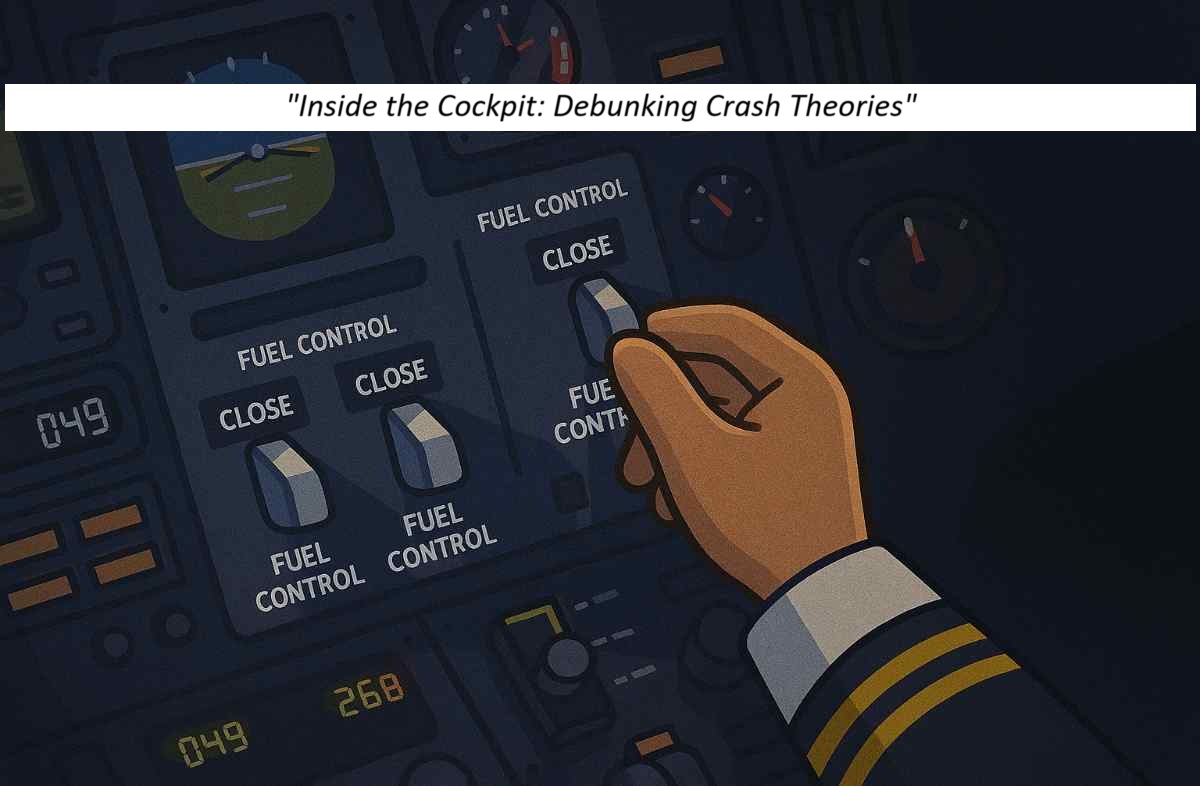Fuel switches were flipped within one second—too fast for a pilot’s reaction, says aviation expert; suggests possible electrical failure instead.
🔍 Background: Preliminary Crash Report Raises Eyebrows
The Aircraft Accident Investigation Bureau (AAIB) recently released its preliminary report on the tragic Air India Dreamliner 787-8 crash that occurred on June 12, killing at least 260 people, including 241 passengers. Among the critical findings was that the fuel switches for both engines were turned off within one second—a point that has fueled speculation, especially from some Western media sources, suggesting intentional sabotage by one of the pilots.
🛫 Timeline of the Final Seconds
- At 08:08:42 UTC, the aircraft reached a speed of 180 knots.
- Immediately after, fuel cutoff switches for both engines moved from “run” to “cutoff” within a single second.
- Engine 1’s switch was turned back to “run” at 08:08:52, and Engine 2’s at 08:08:56—a 10 and 14-second delay, respectively.
- One pilot was recorded asking the other, “Why did you cut off the engine?” The other pilot denied doing so.
✈️ Expert View: “Fastest Fingers in the Cockpit?”
Speaking to a leading news channel, aviation expert Captain Eshan Khalid dismissed the sabotage narrative on mathematical and operational grounds.
“If the two switches were turned off within one second, that would mean a pilot moved both switches in under 500 milliseconds each. That’s nearly impossible—even for the most experienced crew,” he stated.
He also questioned the delay in reactivating the switches:
“If one pilot did it, why did the other take 10 seconds to respond, knowing the aircraft was in grave danger? Shouldn’t it have been milliseconds, not seconds?”
⚡ Alternative Explanation: Electrical Signal Failure?
Captain Khalid proposed a technical explanation—that an electrical malfunction may have triggered the fuel cutoff automatically, rather than any human action. He speculated that the physical switches might have only been toggled later, when the pilots were already attempting to restart the engines mid-air.
🏥 The Crash Site & Tragic Outcome
The aircraft crashed just 32 seconds after take-off, impacting the premises of a local medical college, adding to the devastation. Rescue and recovery efforts confirmed no survivors among the passengers or crew.
🔎 Conclusion: Many Questions Remain
While the AAIB continues its investigation, Captain Khalid’s analysis adds a critical dimension to the narrative—challenging premature theories of pilot error or intent and urging for a more technically-grounded evaluation.
The final report is awaited, and until then, any conclusion remains speculative.



